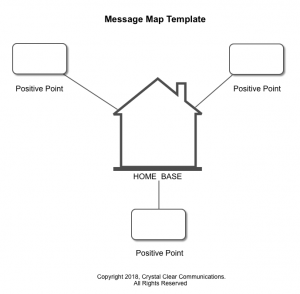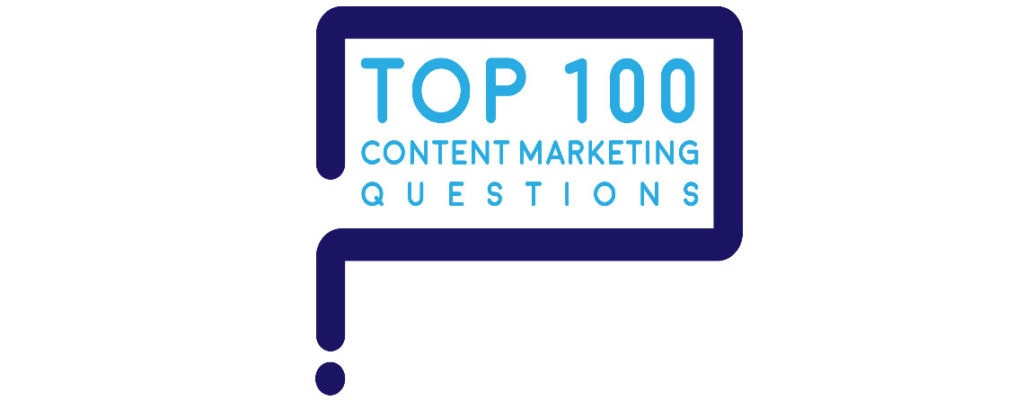
Top 100 Content Marketing Question: How do you efficiently take one piece of content and quickly adapt it across internal/external channels?
The question boils down to: how to quickly adapt content?
Marketers constantly face the need to quickly adapt content across communications channels, audiences and media to get the word out fast.
Here are 4 tricks I learned over 30 years. We used these approaches to create content to announce mergers and acquisitions (M&A), thought-leadership articles, new products, survey results, executive changes, and big customer wins.
On events such as M&A, we usually had 48 hours or less to prepare all communications from scratch. For example, we announced the $70 billion merger of two Fortune 50 companies (Ameritech and SBC Communications) with only 48 hours’ lead time.
All of these events demand creating an overarching message and strategy quickly. Then, adapt the message and strategy to the needs of each audience, channel and medium.
These same 4 tricks work when you need to quickly adapt content.
1. Create templates in advance to speed response.

If you anticipate a string of related announcements, whether or not you know the dates in advance, create fill-in-the-blanks templates to speed the work.
For example, Symantec updates its Norton customers when digital security threats such as breaches, hacks and leaks come to light. With templates created in advance, the Symantec content marketing team does not need to reinvent the wheel for each new threat.
Instead, they use templates to frame rapid-response communications. The team moves quickly to create and distribute new content in 24 hours or less.
If your company borrows interest from today’s headlines by newsjacking, create templates in advance that enable you to quickly adapt content across channels. Templates help you get the word out faster, internally and externally.
Whenever possible, build templates to handle similar, predictable events or announcements in advance. Templates are one key to quickly adapt content. Below you’ll find templates for strategy and a Message Map.
2. Assign a Speed Team to create the message and strategy.

In big companies, people are assigned roles by the type of work they do. We specialize by function – web, email, social media, PR, events and so forth.
The bigger the organization, the more cumbersome it becomes to adapt content quickly.
Why? Because it’s hard for many people to learn the same information quickly, to come up the learning curve fast, and to coordinate overlapping deliverables.
Instead of assigning the whole organization to tackle the project, create a Speed Team of 2 or 3 people who focus solely on one topic, event or announcement.
To quickly adapt content, the Speed Team performs these specific tasks:
- Do interviews and research to gather inputs and content assets.
- Co-create a Message Map with internal clients, to ensure delivery of one consistent message across all audiences, channels and media.
- Create a 1-page strategy that spells out exact deliverables to address the business needs.
- Write drafts of all communications, even those outside the Speed Team’s usual functions.
- Brief the whole marketing team on the message and strategy.
- Share communications drafts to enable the whole team to act quickly.

The benefits of a Speed Team are many:
- Only 2 or 3 people need to come up the learning curve quickly.
- Since 100% of their time goes into the project, they learn the topic and context fast.
- With a Message Map and strategy ready to go, they can brief their peers and engage the power of the whole team efficiently.
The Speed Team establishes and gains approval of the message and strategy, so all content can be written speedily.
Then a Speed Team writes drafts of a news release, employee announcements, talking points for live events, Q&A, backgrounders, and other communications deliverables.
The Speed Team also frames up needs for photos, illustrations, infographics, and videos. It collects available content assets that apply to the project.
The Speed Team briefs peers in marketing with draft documents. Specialists then apply their knowledge of audiences and media, tweak the message appropriately, and quickly distribute it through the right channels.

The Speed Team positions marketing to quickly adapt content. It enables a synchronized, orchestrated content release across all audiences, media, and distribution channels.
For any announcement, a Speed Team also reduces the risks of information leaking prematurely. It’s imperative for financially material announcements such as mergers and acquisitions or executive changes in public companies.
Assign a Speed Team to take a specific topic, learn it deeply, then atomize the content. By atomizing content, you can create many different types of content from one asset, such as a white paper.
For ideas on how to make your existing content work harder, here’s a blog on how to repurpose your content and extract even more value.
3. Keep the message absolutely consistent with a Message Map.

It’s crucial to use a unified Message Map to keep the message absolutely consistent across all media, distribution channels, and audiences.
Why? Because human brains equate consistent messages with credibility. That’s why the main message or home base must remain absolutely consistent.
As you address each segment of your audience – customers, employees, investors, and influencers – emphasize the parts of the message that are most relevant to them. But keep the overall message consistent.

Even as you keep your message consistent, vary the stimulus to head off audience boredom. Change communications from text to graphics, one-way to two-way, still images to moving images, formal to informal, and so forth.
The graphic above provides ideas from neuroscientist Dr. Carmen Simon on how you can change the stimulus to head off habituation – the problem of people ignoring a message because it seems old, not new.
4. Bundle related content assets into one touchpoint.

When you need to quickly adapt content, build one touchpoint that enables all audiences to easily find all the content about a topic, bundled together.
In the DemandGen B2B Content Preferences Survey, 93% of content users ask marketers to package related content together.
For newsworthy external announcements, create a news release with a headline, lead paragraph, and bulleted list of content assets with links. For example, paragraph two of the news release offers links to these assets:
- Video
- Podcast
- Infographic
- Executive summary
- Backgrounder
- Q&A.
For internal news, provide links from an employee story to a bundle of content assets – such as a recorded Town Hall, a Q&A, news media coverage, and infographics.
If the announcement is not news-driven, create a content hub with all related content assets on a given topic. Add assets overtime to keep the content hub fresh.
For example, I created a webpage for the Top 100 Questions that marketers ask about content marketing. Each week, I answer another question and add it to the Top 100 Questions page.
“How do you (efficiently) take one piece of content and quickly adapt content across channels (internal/external)?” is one of marketers’ Top 100 Questions on content marketing.

Here are 4 tips on how to quickly adapt content across communications channels:
1. Create templates in advance to speed response.
2. Assign a Speed Team to create the message, strategy, and draft communications.
3. Keep the message absolutely consistent with a Message Map.
4. Bundle related content assets into one touchpoint.
What tricks do you use to quickly adapt content to multiple audiences, channels, and media? Share your ideas in the comments below.
Related Posts
Launching a product virtually? Read these tips
Tips for launching a product virtually. Autumn will be here soon. Time for changing leaves, pumpkin spice lattes, and product launches. Yes, product launches....
Content Marketing World: How to Speed the Journey from Content to Cash
A standing-room-only crowd heard George Stenitzer’s talk How to Speed the Journey from Content to Cash at Content Marketing World. He focused on what BtoB technology and telecom content marketers...
Marketers Prove Curious about Messaging, Content, and Presentations in 2023
Thank you for being among thousands of marketers who read our blogs. Your reading habits revealed which topics you’re most interested in this year....
Content Marketing Strategy: What Are 3 Key Steps?
Strategic content marketing takes 3 steps: surround the customer with content be thought-provoking turn content into conversions. This 3-step approach enabled Tellabs’ content marketers to...





